 |
|
New England Meteoritical Services
|
|
|
Meteorites
and Meteoritical related
Specimens
for Sale
|
|
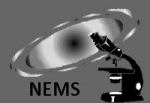 |
On-Line
Catalogue, Page 1, Larger Specimens and Macros
Menu Page
Conditions of Sale
Specimens are offered on a first-come, first serve
basis and are guaranteed to be as represented.
A Certificate of Meteorite Authenticity is included with each meteoritical
specimen.
For ordering please go to the Ordering page or email us to check
availability.
Images Copyright protected, 1992 - 2024 New England
Meteoritical Services, inclusive all years.
These are difficult to
acquire meteorite localities or classifications.
All images were taken of the specimens being offered. Prices and availability
subject to change without notice.
Ordering Page
Questions on availability of any
specimens? lab@meteorlab.com
Meteorites
|
 Indicates Observed Fall. Indicates Observed Fall. |
| |
| Refresh page
for new images. |
| |
|
|
|
|
| |
Sikhote-Alin iron
meteorite

The largest known iron meteorite fall in modern
history occurred on February 12, 1947. A 70 ton iron mass burst apart in the
atmosphere over the Sikhote-Alin region of Siberia, showering the area with
thousands of iron fragments.
There are two types of Sikhote-Alin meteorites
– shrapnel and regmaglypted. The shrapnel specimens attest to the violence
incurred during atmospheric passage as the iron bolide burst apart along
crystal and plate boundaries. The regmaglypted specimens display a rounded,
smooth, and often thumb printed surface (regmaglypts) from the atmospheric
friction and ablated melting.
Classified as a IIAB coarsest octahedrite,
specimens of Sikhote-Alin are highly sought after for collections, research,
and display. |
|
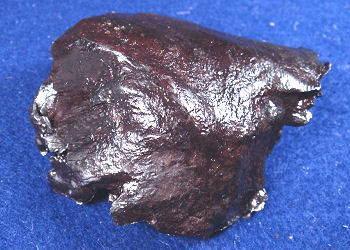 |
|
| |
|
|
Sikhote-Alin,
213.0 grams |
|
| |
|
|
Ablated, "heat
shield-oriented", partial fusion-crusted, 70mm x 55mm x 20mm,
$190.00 |
|
| |
|
|
|
|
| |
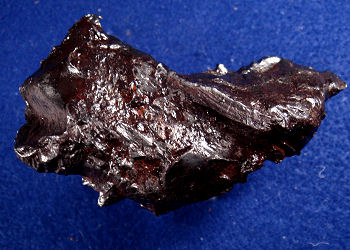 |
|
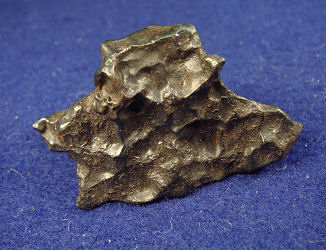 |
|
| |
Sikhote-Alin,
255.9 grams |
|
Sikhote-Alin,
56.5 grams |
|
| |
Regmaglypted, many
shear lines, fusion-crusted, 90mm x 45mm x 24mm, $210.00 |
|
Regmaglypted,
fusion-crusted, 50mm x 27mm x 22mm, $140.00 |
|
| |
|
|
|
|
| |
 |
|
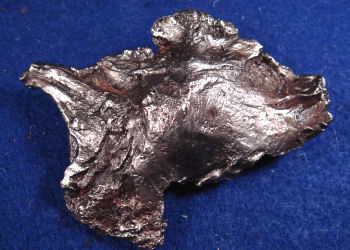 |
|
| |
Sikhote-Alin,
355.0 grams |
|
Sikhote-Alin,
133.0 grams |
|
| |
Fusion-crusted, with
impact-melt surfaces, and one large crater-shaped structure. 90mm x 45mm x
30mm, $290.00 |
|
A very clean, with
fold-over surfaces from atmospheric melting, specimen. Spectacular twisted
shape, 72mm x 54mm x 19mm, $160.00 |
|
| |
|
|
|
|
| |
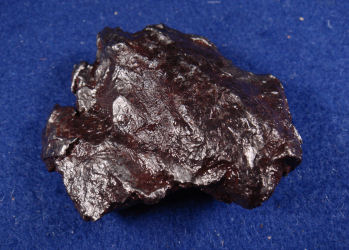 |
|
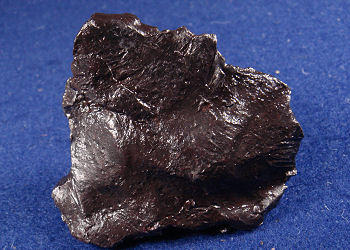 |
|
| |
Sikhote-Alin,
199.0 grams |
|
Sikhote-Alin, 163.22
grams |
|
| |
Impact-melt
surfaces, fold-over leading edges, 65mm x 45mm x 25mm, $210.00 |
|
Impact-melt
surfaces, flow lines, 54mm x 48mm x 23mm, $190.00 |
|
| |
|
|
|
|
| |
|
|
|
|
| |
|
|
|
|
| |
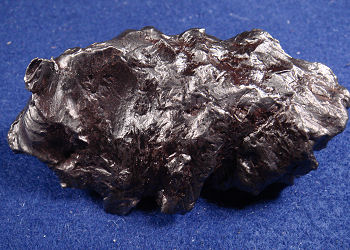 |
|
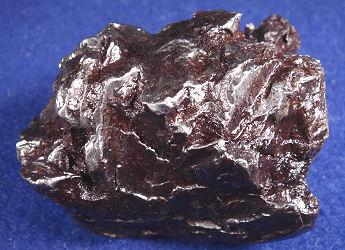 |
|
| |
Sikhote-Alin, 349.9
grams |
|
Sikhote-Alin, 505.0
grams |
|
| |
Impact-melt
surfaces, 90mm x 45mm x 25mm, $280.00 |
|
Impact-melt
surfaces, flow lines, 75mm x 50mm x 45mm, $380.00 |
|
| |
|
|
|
|
| |
|
|
|
|
| |
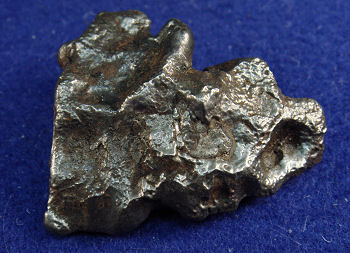 |
|
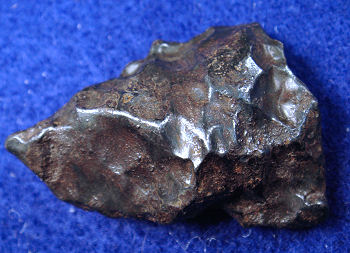 |
|
| |
Sikhote-Alin, 58.7
grams |
|
Sikhote-Alin, 37.5
grams |
|
| |
Regmaglypted,
fusion-crusted, 43mm x 35mm x 15mm, $150.00 |
|
Regmaglypted,
fusion-crusted, 38mm x 27mm x 15mm, $110.00 |
|
| |
|
|
|
|
| |
|
|
|
|
| |
|
|
|
|
| |
|
|
|
|
| |
Canyon Diablo
Iron meteorite
Crashing into what is
now Arizona somewhere around 50,000 years ago was the Canyon Diablo iron
meteorite.
Fragments of the
meteorite have been actively collected since the mid-1800s and there is
evidence that fragments were collected and used by pre-historic Native
Americans.
There are more than a
dozen identifiable minerals within the Canyon Diablo iron meteorite.
Significant for use in geologic dating using Pb-Pb isochrons, is the iron
sulfide mineral troilite (FeS).
The troilite in Canyon
Diablo contains the lowest lead ratios between several isotopes of lead (Pb
204, 206, and 207) ever measured and has become the reference standard for lead
dating methods. Canyon Diablo is classified as a IAB iron. |
|
 |
|
| |
|
|
Canyon Diablo crater |
|
| |
|
|
|
|
| |
|
|
|
|
| |
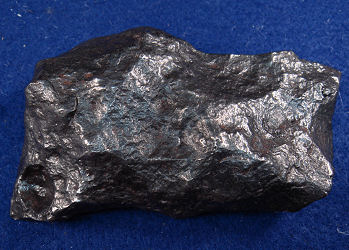 |
|
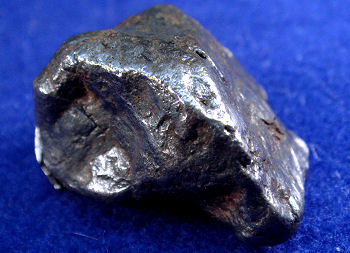 |
|
| |
|
|
|
|
| |
Canyon Diablo, 293
grams |
|
Canyon Diablo, 98.3
grams |
|
| |
Almost 2/3's of a
pound in weight, 82mm x 45mm x 23mm, angular. Very clean specimen, excellent
for display.$290.00 |
|
Nicely shaped, 40mm
x 34mm x 20mm, angular, $180.00 |
|
| |
|
|
|
|
| |
|
|
|
|
| |
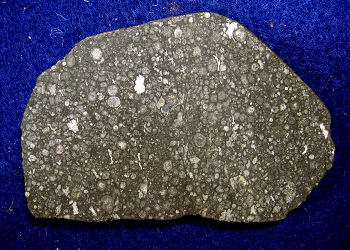 |
|
 |
|
| |
Allende,
Mexico, CV3 carbonaceous chondrite, 28.33 grams. |
|
Silverton,
Texas, H4 chondrite, 22.98 grams |
|
| |
Fell, February 08, 1969. Chihuahua, Mexico. One
of the most important Falls in meteorite history and one of the most talked
about specimens in any collection. This is a full slice, fusion crusted edges,
polished and lab prepared on both sides for optimum display and study. Visible
chondrules, CAI's, hibonite, and amoeboid olivine aggregates. 63mm x 41mm x
5mm, 28.33 grams. SOLD. |
|
Found in Briscoe County, 1938. three stones,
2.576 kg total weight. H4 chondrite. Silverton was once held in the Nininger
Collection of Meteorites. 22.98 grams, 42mm x 24mm x 9mm, $ 160.00 |
|
| |
|
|
|
|
| |
|
|
|
|
| |
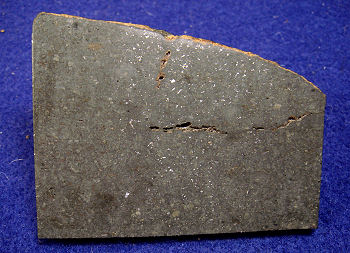 |
|
 |
|
| |
Forestburg b, L4
chondrite, Texas, 40.3 grams. |
|
Cumberland Falls,
Kentucky, Aubrite, 1.34 grams
 |
|
| |
Montaque County, Texas. Found 1957. 26 kg found,
one stone. This meteorite is distinct from Forestburg a. Large slice, nice
detail. 65mm x 51mm x 3mm, 40.3 grams, $180.00
|
|
Whitley County,
Kentucky. Fell April 9, 1919. Classified as a brecciated Aubrite,
SOLD |
|
| |
|
|
|
|
| |
|
|
|
|
| |
 |
|
 |
|
| |
Sierra Colorada,
Argentina, L5 chondrite, 25.43 grams |
|
Round Top b,
Texas, H4 chondrite, 22.11 grams |
|
| |
Rio Negro,
Argentina. Found 1995, L5 chondrite. Single stone, melt veins, 71.3 kg found.
An impact breccia with both a coarse and fine lithology. 25.43 grams, 45mm x
33mm, 6mm, 25.43 grams, $125.00. |
|
Fayette County,
Texas. Found 1939. H4 chondrite, one 7.116 kg stone was found. Contains shock
veins, melt pockets. Vivid display of Ni/Fe grains. 51mm x 34mm x 5mm, $110.00.
|
|
| |
|
|
|
|
| |
|
|
|
|
| |
 |
|
 |
|
| |
Pony Creek,
Texas, H4 chondrite, 33.11 grams |
|
St. Lawrence,
Texas, LL6 chondrite, 21.5 grams |
|
| |
Runnels County, Texas. Found 1947. H4 chondrite,
4,642 grams found, one stone. Main mass is at TCU. 33.11 grams, 56mm x 41mm x
5mm, $130.00 |
|
Glasscock County,
Texas. LL6 chondrite. A single stone, 2.6 kg. Found in a pasture by a ten year
old boy in 1965. Fusion crusted, light grey interior. 21.5 grams, 27mm x 21mm x
16mm, $120.00 |
|
| |
|
|
|
|
| |
|
|
|
|
| |
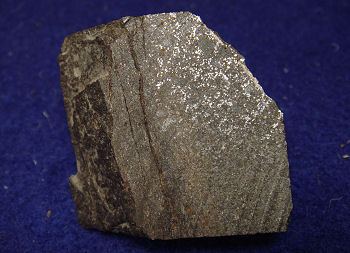 |
|
 |
|
| |
Estacado, Texas,
H6 chondrite, 25.84 grams. |
|
Sleeper Camp 001,
Australia, L6 chondrite, 19.2 grams |
|
| |
Hale County, Texas.
H6 chondrite, found 1883. 290 kg found in a single stone. Abundant Ni/Fe
grains, chondrules. 30mm x 31mm x 10mm, 25.84 grams, $120.00.
|
|
Nyanga Plain,
Western Australia, Australia. L6 chondrite, TKW 1.26 kg. Found 1962. 19.2
grams, 67mm x 30mm x 5mm, $120.00. |
|
| |
|
|
|
|
| |
|
|
|
|
| |
 |
|
 |
|
| |
Clifford,
Colorado, L6 chondrite, 9.16 grams |
|
Carnegie,
Colorado, L6 chondrite, 18.91 grams |
|
| |
Lincoln County,
Colorado, L6 chondrite. Found 1962. A single mass, 11.36 kg was found by a
local resident in a rangeland. They thought it looked unusual and brought it
home for their rock garden where is stayed for 10 years before being recognized
as a meteorite. 9.16 grams, 47mm x 27mm x 3mm, $90.00 |
|
Caddo County,
Colorado. L6 chondrite. 132.7 kg, found in 1963 while terracing a field. The
main mass is held in the Huss, Nininger Collection of Meteorites. Dark brown
matrix, Ni/Fe grains, chondrules, 18.91 grams, 55 x 35 x 7mm, $120.00.
|
|
| |
|
|
|
|
| |
|
|
|
|
| |
 |
|
 |
|
| |
Abee, Canada, EH4
enstatite chondrite, 14.9 grams
|
|
Armel, Colorado,
L5 chondrite, 13.9 grams |
|
| |
Alberta, Canada.
EH4, Fell June 10, 1952. 107 kg recovered, single stone, from a hole 2ft ro 3ft
in diameter, 6 feet deep, and inclined at an angle of 25 degrees to the
vertical. Abee is a rare enstatite chondrite, high-iron subgroup, black, with
impact-melt breccia. 32mm x 29mm x 8mm, 14.9 grams, SOLD |
|
Yuma County, Colorado. Found 1967.
L5 chondrite. A single 9.2 kg stone was plowed up in a field. Dark brown/black
goundmass, abundant Ni/Fe grains, chondrules. 13.9 grams, 38mm x 27mm x 5mm,
$90.00. |
|
| |
|
|
|
|
| |
|
|
|
|
| |
 |
|
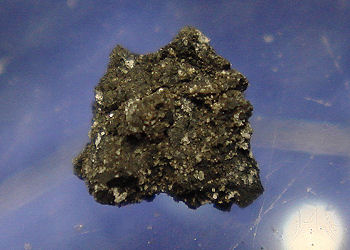 |
|
| |
Buck Mountain
Wash, Arizona, H3-5 chondrite, 18.52 grams |
|
Orgueil, France,
CI1 carbonaceous chondrite, fragment
 |
|
| |
Mohave, Arizona.
H3-5 chondrite. Found 2004. Low TKW - only 798 grams in a single stone.
Weathering grade: W1. Shock stage: S2.
Brown matrix, abundant Ni/Fe grains, chondrules.
18.52 grams, 52mm x 48mm x 2mm, SOLD |
|
Tarn-et-Garonne, Montauban, France Stone,
carbonaceous chondrite, CI1 (Ivuna group, type 1) Fell May 14, 1864. The
Orgueil meteorite represents some of the oldest known, least altered, matter.
The specimen is sold by size and not weight. 4.5mm x 3mm x 2.5mm,
$380.00
Note: The Orgueil meteorite is, arguably, one of the most
significant meteorites to be held in any collection. |
|
| |
|
|
|
|
| |
|
|
|
|
| |
 |
|
 |
|
| |
Cocklebiddy,
Australia, H5 chondrite, 14.435 grams |
|
Brownfield
(1937), Texas, H3.7 chondrite, 33.08 grams |
|
| |
Moonera, Hampton
Tableland, Western Australia, Australia. H5 chondrite, single stone, 19.5 kg.
Found 1949. Dark grey, mm-sized Ni/Fe inclusions and grains. An attractive
display specimen. 40mm x 20mm x 4mm, $108.00. |
|
Terry County, Texas.
H3.7 chondrite - unequilibrated. Found 1937. Seven stones totalling 40.96 kg.
Dark brown matrix, Ni/Fe grains, chondrules. Large surface area. This is a
great price and size for an H3.7 meteorite. 33.08 grams, 53mm x 44mm x 6mm,
$110.00. |
|
| |
|
|
|
|
| |
|
|
|
|
| |
 |
|
 |
|
| |
Cleo Springs,
Oklahoma, H4 chondrite, 30.31 grams |
|
Chico, New
Mexico, L6 chondrite, 8.57 grams |
|
| |
Major County,
Oklahoma. H4 chondrite. A 24 kg single mass was found by a farmer in a wheat
field and used as a plow weight in 1960. Dark brown ground mass, abundant
sand-sized Ni/Fe grains and chondrules. 30.31 grams, 50mm x 36mm x 6mm,
$120.00. |
|
Colfax County, New
Mexico, L6 chondrite. One stone weighing 104 kg was found in 1954. Chico is a
highly shocked, impact-melt chondrite with impact-melt rock clasts. 40mm x 17mm
x 6mm, $70.00 |
|
| |
|
|
|
|
| |
|
|
|
|
|


































